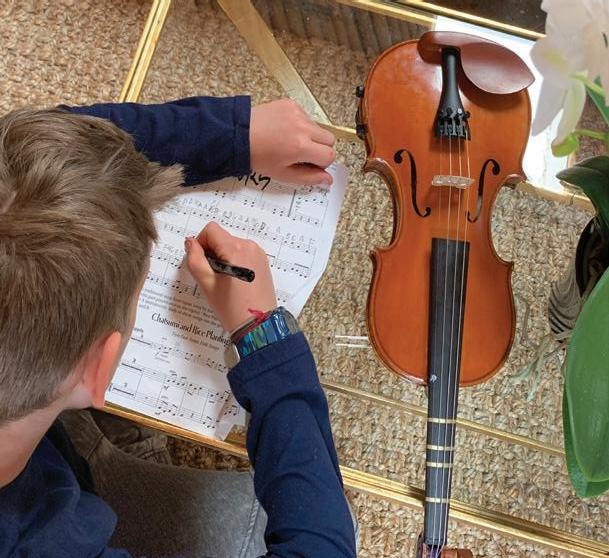
6 minute read
Distance Learning
SFWS TODAY: Distance Learning During COVID-19

Advertisement
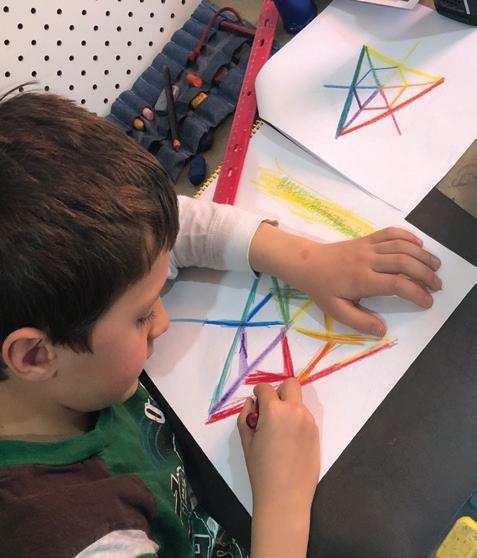
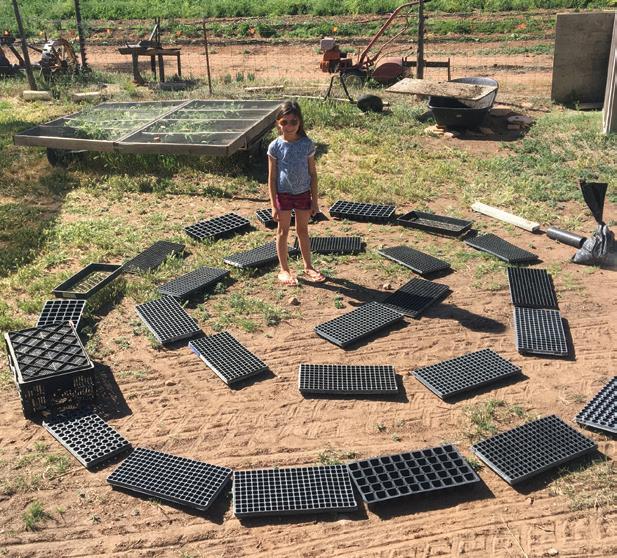
TAKING THE CLASSROOM ONLINE AND INTO HOMES By Cynthia Marshall Shore
You would think it would be a tall order for a Waldorf school to turn to technology and computers as teaching tools for our hands-on, multi-sensory, student-based curriculum.
But the Santa Fe Waldorf School has not only met this challenge, it did so with expertise and excellence. Pedagogical Chair Karl Johnson notes “The SFWS faculty pulled off a herculean task pivoting into the distance learning modality in March.”
And SFWS executed that pivot before most area schools. Anticipating the possibility of a school closure because of the COVID-19 pandemic, SFWS faculty began developing creative ways to teach online and stay in touch with students even before the school closure on March 16 and well before the New Mexico Public Education Department ordered the state’s public schools to start distance learning on March 27.
Using Google Classrooms as a base, the school developed a comprehensive approach for the new reality. Across all sections, the teachers came up with creative ideas and engaging lessons and assignments to move the educational program online, notes Johnson. “They not only kept the program going through the end of the school year, they also made efforts to really stay connected with students and families throughout the process,” he says.
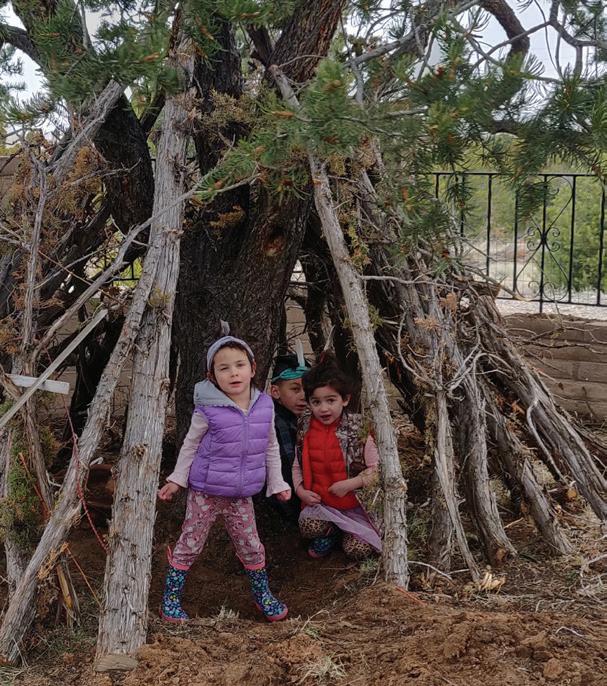
For Early Childhood educators, the challenge was particularly acute because the curriculum does not use technology at all. Instead, teachers kept in touch with parents via telephone, Zoom meetings, email, and curricular packets—including seeds to plant— left in bins for pick up at the school. Natalie Buschbom, parent to rising first grader Logan Buschbom, and rising kindergarteners Taylor and Paige Buschbom, said that her children’s instructors supported her family well, emailing “great activities including circle time songs and movements, recipes for the class meals the children have been 2 ZOOM meeting with seniors, their parents and their teachers.
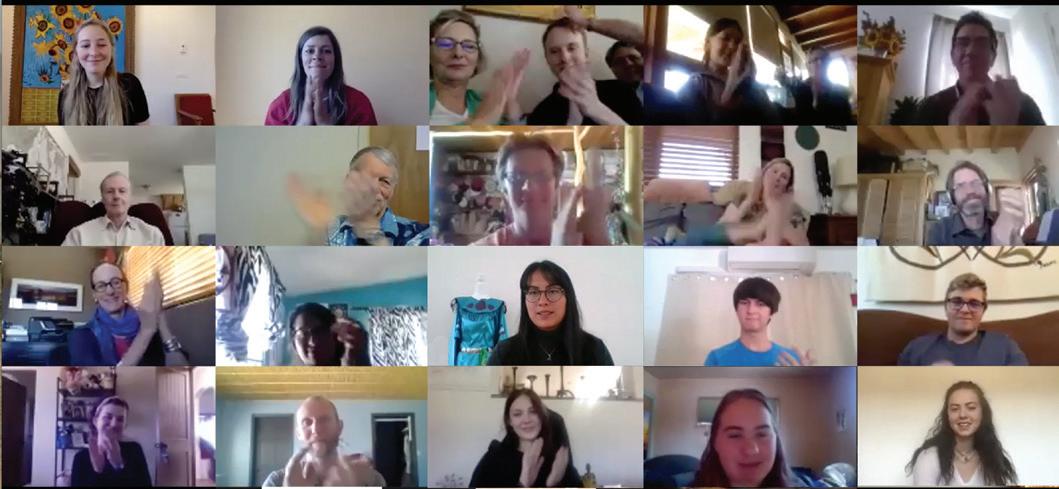
craving, homemade playdough, and much more!” The family also built a Waldorf-inspired shelter (see image bottom left) and later an herb spiral so the children can tend plants for use in cooking.
Kindergarten teacher Karleen Whitcomb admits it was challenging to meet the needs of the early childhood families while holding to the principles of Waldorf education. She notes, “I think the most successful thing we have done is to record stories in 10 to 20 minute segments for the families to listen to daily. Some parents have said how nice it is to have our voices in their homes.”
Whitcomb also made little woolly eggs and chicks as spring gifts for each student and organized weekly “Zoom parades” for students to show off their home activities. “It was very sweet for everyone to see each other,” says Whitcomb.
Grade school students worked in their main lesson books at their home desks studying early civilizations, math, science and writing. Grade 2 teacher Micayla Durán recorded guides for students to listen to as they drew, while Grade 7 teacher Kate Pavuk had students make self-styled masks of protection similar to those of the indigenous Boruca peoples of Costa Rica during their Latin American block.
Ninth graders continued their English studies by reading The Curious Incident of the Dog in the Night Time by Mark Haddon and drawing their visualizations of the main character Christopher Boone (see page 10), while 10th graders studied
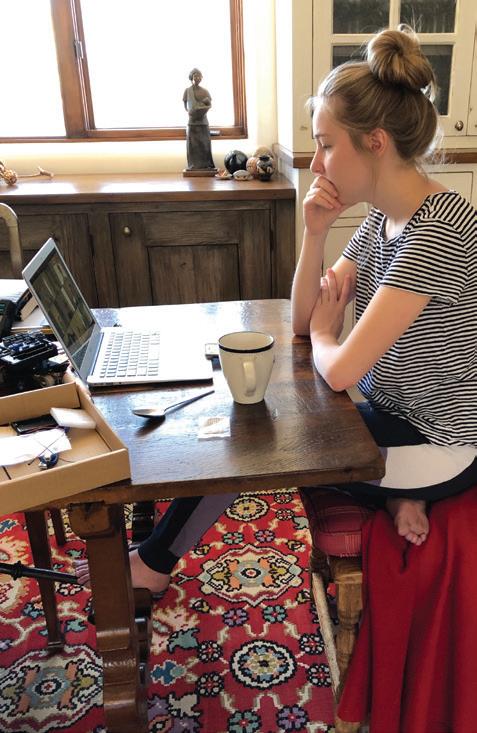
Homer's Odyssey. Seniors prepared their year-end projects (see page 7) and turned their minds to the future after receiving their college acceptances (see page 5).
Handwork teacher Danelle Aragon opened online classrooms in knitting, crocheting, and sewing, and organized a schoolwide mask-sewing project, sending out videos and instructions for masks to be made for the local domestic abuse agency, La Esperanza. Parent & Child teacher Erin O’Neill wrote blog posts for her families outlining resources to create resilience for homebound students.
For their music studies, students uploaded instructional videos and recordings on a weekly basis, notes Lee Harvey, director of the high school and middle school orchestras. She reports she was proud of her students’ adaptability: “Though we were no longer able to come together to play, many were still opening their cases, practicing, taking online lessons and regularly putting in the elbow grease it takes to learn an instrument.”
She also sees some silver linings in the situation. “The distance learning platform has forced the students to use the knowledge they have gleaned from their teachers to make sense of the music in a more independent manner,” Harvey says. Grades 5 through 12 put together a virtual performance to be aired in June.
To end the school year on a positive note, and to offset family fatigue after months of isolation and online learning, the school ended the year a week early on May 29th and offered a range of class art projects to be done at home. Teachers also created a giant chalk mandala on the basketball court for school families to fill in with artwork as a year-end project (see back cover).
Overall, SFWS' response to the pandemic crisis has helped keep our community connected. Says Johnson, the staff's "hard work and dedication is to be commended."
Top images L to R : Teagan Goorley (Grade 2) drawing at home listening to recorded prompts by his teacher Micayla Durán; Bella Conwell (Grade 1) created a spiral as her Outdoor Activity assignment; Django Russell (Grade 4) studies his music; Morning Circle at home with teacher Daniel Wendland and his children Arjun (Kindergarten) and Ayesha (Preschool); Xia Durán y Jennings (Grade 3) illustrating the story of Joseph in Egypt; Jackson Cole (Grade 9) creating art Jackson Pollack style; and senior Story Coleman on a Zoom meeting at home.
A PARENT’S REFLECTION ON THE PANDEMIC
With COVID-19 permeating our coverage of the school this issue, we chose to include community member Kyce Bello’s poem The Thin Line, which so perfectly reflects the position many of us find ourselves in right now.
A version of this poem first appeared in the Santa Fe New Mexican on April. 17.
Bello’s debut poetry collection Refugia (University of Nevada Press, 2019) was winner of the inaugural Test Site Poetry Prize. She holds an MFA in poetry from the Institute of American Indian Arts, and works as a Registered Nurse in Santa Fe.
Bello is the founding teacher of SFWS’ Parent & Childclasses, is married to Elliot Ryan, high school humanities teacher, and their two daughters, rising 4th and 7th graders, have attended SFWS since preschool. Visit kycebello.com for more information about her work.
The Thin Line By Kyce Bello
Stock trading halted by noon. Airplanes grounded soon after. In an encampment in the forest, a hunter knapping arrowheads says, There is a hole where elders used to be. The thin line of honking birds overhead could be geese, but are Sandhill Cranes. I now gauge whom to trust by who can tell the difference. My daughter hears it won’t be children who die. She grows quiet, then asks So, kids will be the doctors? Kids will be the teachers? and in the pause between her question and No, no, of course not, that future lifts its head to gaze at me. At their compound in the woods, the hunters sleep under bark and pine boughs. They don’t have guns or zippers. They say that needing each other and being needed is better even than a grocery store. They hold hands and look at the stars and think how once, each one was named, and how now, or sometime soon enough, when we’ve forgotten what to call them, they can be named again.










